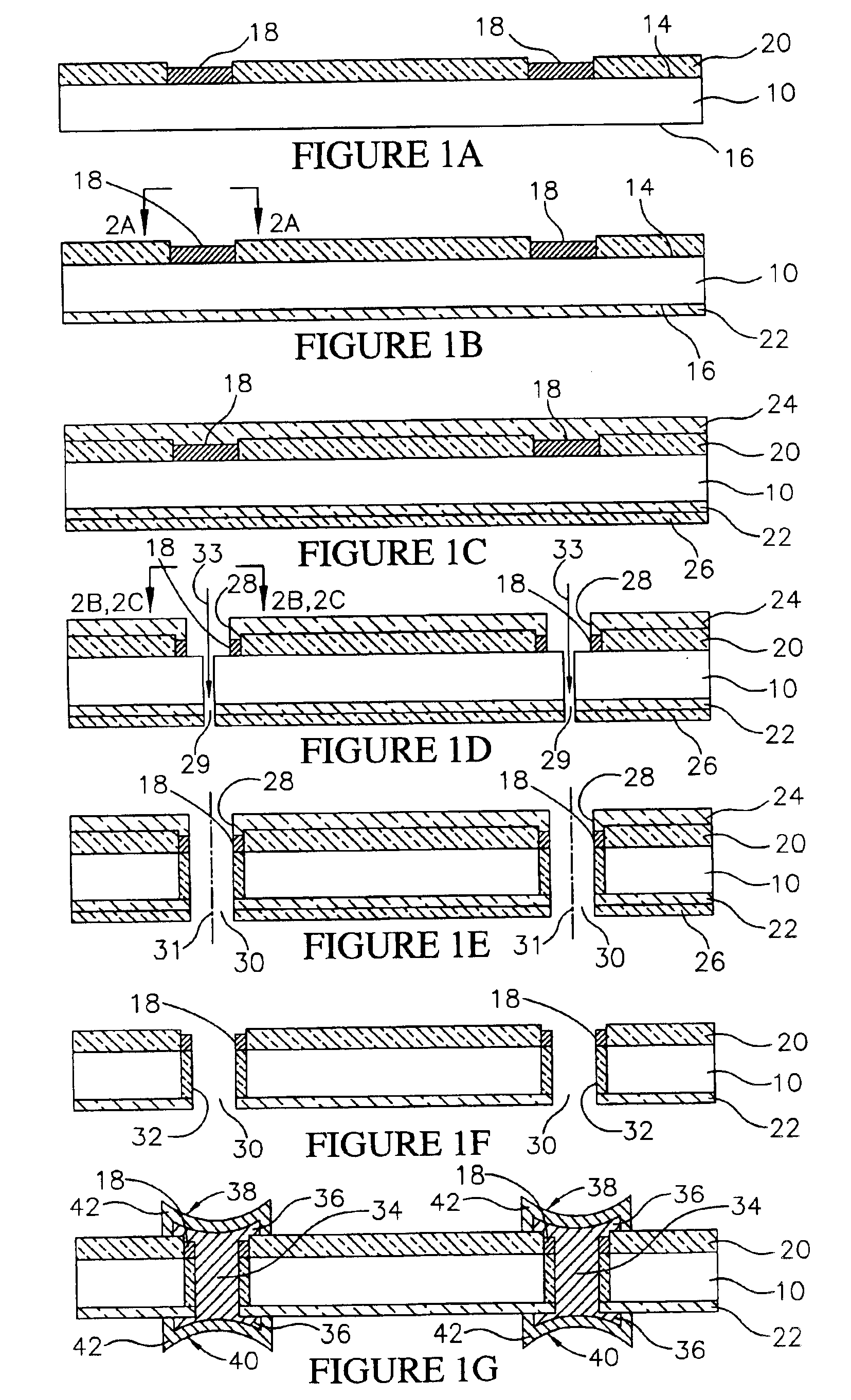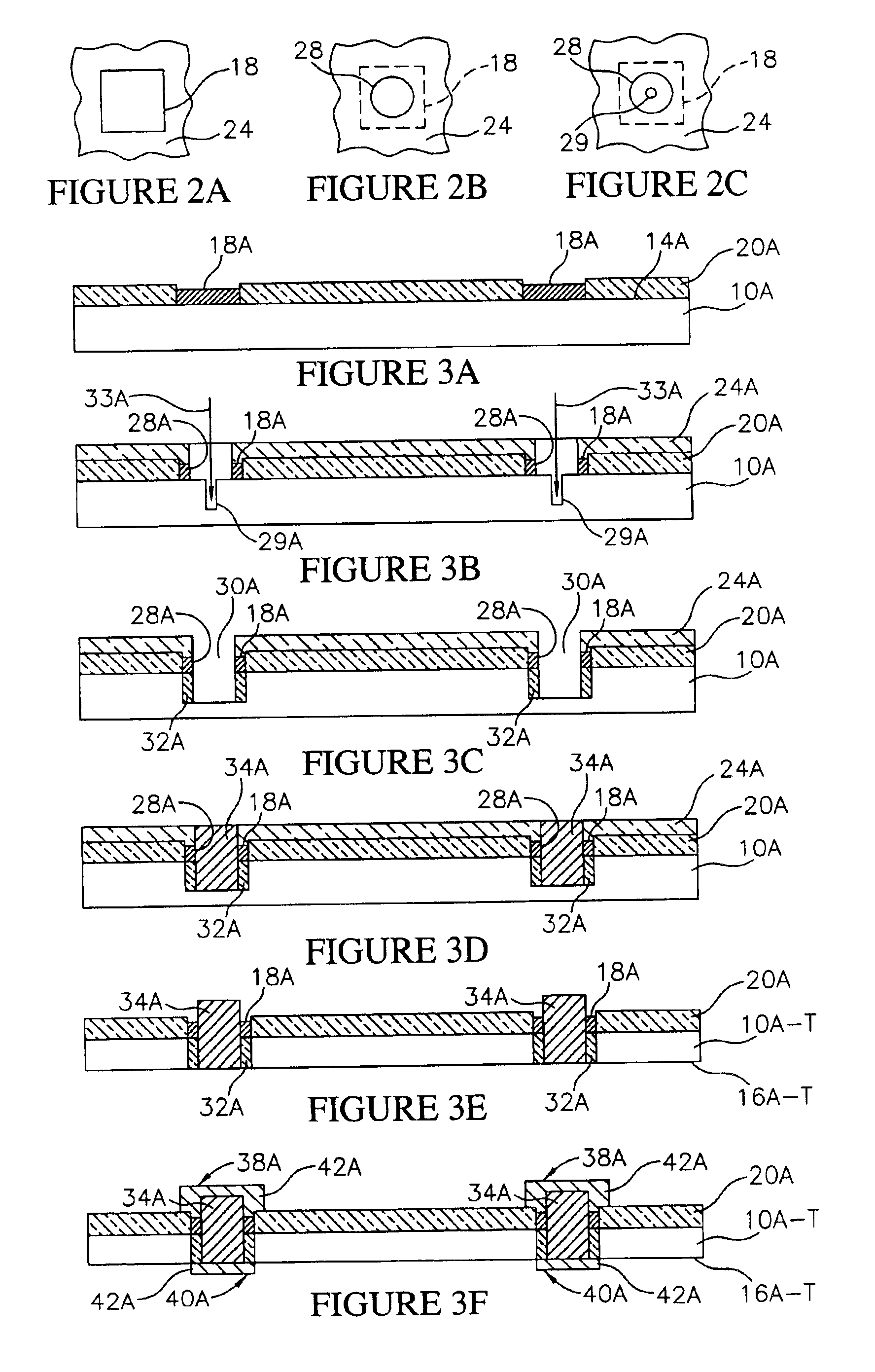Semiconductor component and interconnect having conductive members and contacts on opposing sides
a technology of conductive members and semiconductor components, applied in the direction of printed circuit manufacturing, printed circuit aspects, basic electric elements, etc., to achieve the effect of facilitating permanentity
- Summary
- Abstract
- Description
- Claims
- Application Information
AI Technical Summary
Benefits of technology
Problems solved by technology
Method used
Image
Examples
Embodiment Construction
[0031]As used herein, the term “semiconductor component” means an electronic component that includes a semiconductor die. Exemplary semiconductor components include bare semiconductor dice, chip scale packages, ceramic or plastic semiconductor packages, BGA devices, semiconductor wafers, and panels and leadframes containing multiple dice or chip scale packages.
[0032]An “interconnect” means an electronic component configured to make electrical connections with a semiconductor component. A die level interconnect can be configured to electrically engage singulated components such as a die or a package. A wafer level interconnect can be configured to electrically engage a substrate, such as a wafer, a panel, or a leadframe, containing multiple components.
[0033]Referring to FIGS. 1A-1G, a method for fabricating semiconductor components and interconnects in accordance with the invention is illustrated. Initially as shown in FIG. 1A, a substrate 10 is provided. Preferably, the substrate 10...
PUM
 Login to View More
Login to View More Abstract
Description
Claims
Application Information
 Login to View More
Login to View More - R&D
- Intellectual Property
- Life Sciences
- Materials
- Tech Scout
- Unparalleled Data Quality
- Higher Quality Content
- 60% Fewer Hallucinations
Browse by: Latest US Patents, China's latest patents, Technical Efficacy Thesaurus, Application Domain, Technology Topic, Popular Technical Reports.
© 2025 PatSnap. All rights reserved.Legal|Privacy policy|Modern Slavery Act Transparency Statement|Sitemap|About US| Contact US: help@patsnap.com



